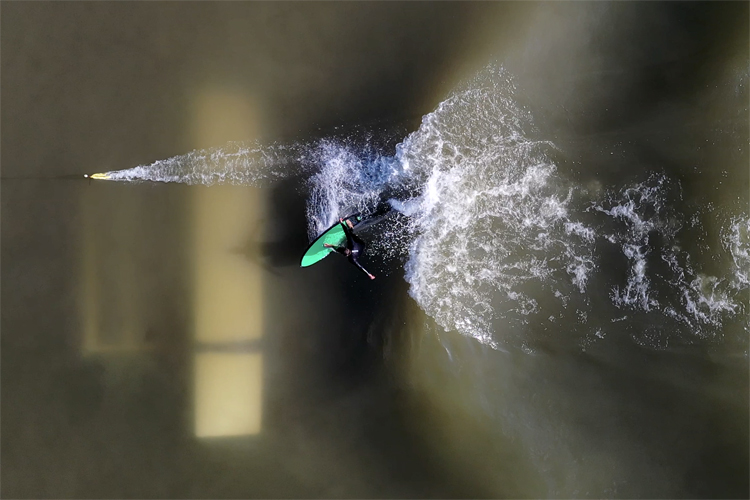Who would think Finland is home to probably the world's most ingenious wave pool technology? Meet Artwave, the human-made wave that could change the surf industry.
Finland is a dream country where you can live an outdoor-oriented lifestyle around water and snow sports powered by air so fresh that it could be bottled and exported.
The Nordic - not Scandinavian - European nation holds the world's highest number of yachts and boats per capita.
In other words, there are 1.3 million boats and three million saunas for a population of roughly 5.5 million. Impressive, isn't it?
Due to their geographical position, Finns are accustomed to long nights and long days.
In the middle of winter, the total daytime is around six hours; in the middle of summer, there are 18 hours of light.
Despite these extreme daylight seasons, Finns are pretty good at making the most of their spectacular natural resources, embraced by the Baltic Sea.
The Scandinavian country features 187,888 lakes with an area over five ares and 75,818 islands larger than 0.5 hectares.
Therefore, exposure to sunlight and sports go hand in hand, and with no surprise, ice hockey, cross-country skiing, ski jumping, and snowboarding are popular sports.
The happiest country in the world is also the home of Nokia and Santa Claus' Lapland.
But how could the sport of surfing fit in a region only occasionally blessed by Baltic Sea wind swells?
Why is the Finnish surfing community so tight and ready to embrace any wave in any type of weather conditions?
How could a wave pool concept be born in this charming nation?
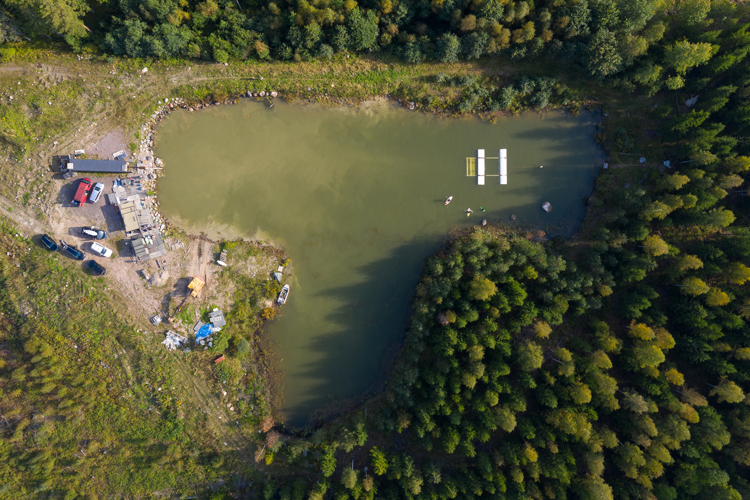
The Birth of Artwave
Finland has solid tech and engineering foundations.
The state takes higher education seriously, and all Finnish public universities lead the country in world rankings.
These academic centers include the University of Helsinki, Aalto University, and the University of Turku.
Atso Andersen is the heart and soul behind Artwave Surf, a project that commenced with the idea of creating a simple concept that could generate surf in the hundreds of thousands of water bodies that bless Finland.
Andersen did not follow the sheep.
His first artificial wave prototype saw the light of day before Kelly Slater unveiled his Surf Ranch wave pool in 2012.
Artwave Surf was born in the academic world in 2011.
Andersen combined his vision and economics background with fluid mechanics engineers and Ph.D. students' work to develop a simple yet ingenious wave-making system that could be installed and operated in lakes, rivers, and even shorelines.
The first small-scale prototypes observed mixed success and evolved from a small Lego-like-sized mechanism operating in a small basin to tests in a swimming pool.
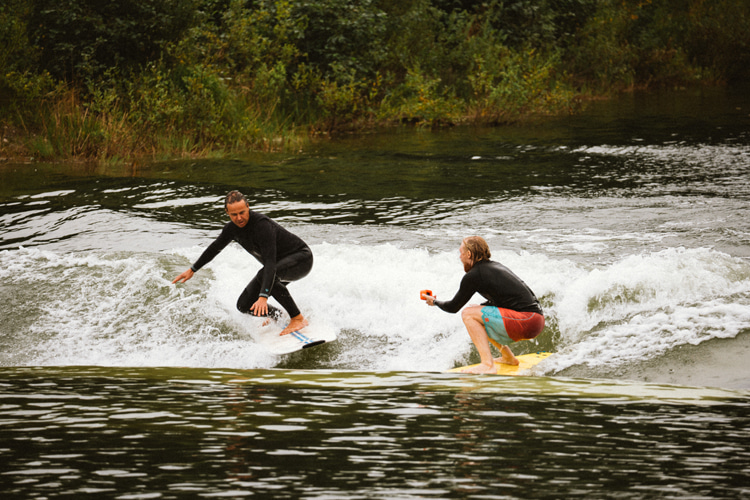
A Unique Concept
By now, you, dear reader, should be interested to know what makes the Artwave artificial surfing technology special and unique.
Believe it or not, it's magical. Or at least, it looks like it.
SurferToday was kindly invited to witness, in person, Finland's pioneering artificial wave at work.
We got access to everything - the private test site, the machinery installed in and out of the water, and the technical data and computer fluid dynamics (CFD) studies that make this dream wave a reality.
Atso Andersen opened it to the non-Finnish surf world for the first time, and SurferToday was granted an exclusive, two-hour surf lake experience.
I can proudly say that I was the first foreign surfer to ride Artwave.
Why do I feel the need to say it? Because I absolutely loved it.
Finland's artificial wave was so fun and intense that it did not even allow me to fall asleep smoothly, given the excitement levels of the experience.
Once again, what is Artwave Surf?
To put it in simple terms, Artwave Surf is an inexpensive surf pool solution that creates an artificial A-frame wave.
It can be quickly installed in any body of water - lakes, rivers, open and closed seas, reservoirs, harbors, bays, estuaries, ponds, and tanks.
It requires equipment and machinery that fit a standard shipping container, which is unimaginable considering the current state-of-the-art of the world's leading wave pool industry players.
All pieces that make this dreamy Finnish wave work are standard maritime components - from the engine and steel cables to the ropes and wings that create the magical surfable slope.
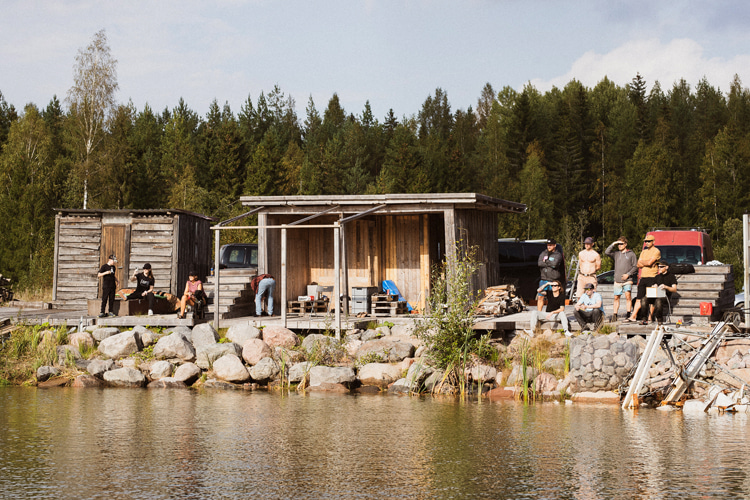
Energy-Efficient and Nature-Positive
But there's more. You can't beat Artwave's energy consumption performances.
The Finnish human-made wave system currently runs at around 120 kWh (peak power during traction).
In other words, if it's processing 30 waves per hour, each wave will need 0.8-0.9 kWh of energy to be ridden.
Let's see how it translates to cost in the following countries as of August 2023:
- USA (California): $0.18 per wave ($0.20 per kWh);
- Finland: €0.17 per wave (€0.19 per kWh);
- UK: £0.30 per wave (£0.34 per kWh);
- Australia: A$ 0.42 per wave (A$0.53 per kWh);
Moreover, the Finnish wave-generating technology does not require any changes in the water basin's bottom contour, as the wave can be adjusted via mechanical adjustments to each site.
This is a groundbreaking innovation that also intimately connects to Artwave's obsession with sustainability.
Atso Andersen's daily work (while not yet running Artwave as a full-time job) as a financial consultant focused on sustainability and the green transition made him want to lead an environmentally responsible surfing business.
How does it happen?
Again, it's important to stress that Artwave does not require concrete water basins or complex bottom contours to operate.
It's easy to assemble and disassemble wave-making technology that uses a low-power engine and a sailboat-inspired wing system that makes waves.
The cherry on top of the cake is the project's ability to renew the oxygen in the water by keeping it moving and refreshed with surfing activity.
This is a process called water aeration, which can also prevent harmful algal blooms in relatively stagnant water bodies.
The system's wave-making wings generate natural oxygen diffusion up to a depth of nine feet (three meters) and stir up to 13 feet (four meters).
"We have done testing that indicates a clear increase of oxygen in the depth of 1.5 meters," Atso Andersen told SurferToday.
"When it comes to the carbon footprint, and compared to concrete wave pools, the Artwave system operates in open water with no fixed structures."
"Now, consider permanent damage to the environment. Artwave's surf design is based on the leave-no-trace principle. We refuse to do waves in places that are prone to wave erosion."
"When we leave, the place will be the same as before our visit. We want ports and dockland water purified so that you can surf."
How unique is Artwave?
Let's put it like this - Andersen's exclusive artificial wave formula is fully covered by a world patent, making it distinctive from all other systems.
Artwave did not copy or imitate - it's a standalone innovation that cannot be compared to any other commercial wave-generation company.
The team even has architectural plans for a floating operating site that can be easily attached to any coastal structure, for example, a café, esplanade, marina, harbor, hotel, beach resort, docks, private property, etc.
It only requires a minimum depth of 13 feet (four meters) and around 200 yards (182 meters) in length to get it running.
Furthermore, it needs no water purification system or additional water supply. It can use Nature's self-replenishing forces to run a surfing wave.
In conclusion, it's a mobile, cost-efficient, and environmentally friendly solution for those who want to ride a wave now and not wait for a random ocean swell tomorrow.
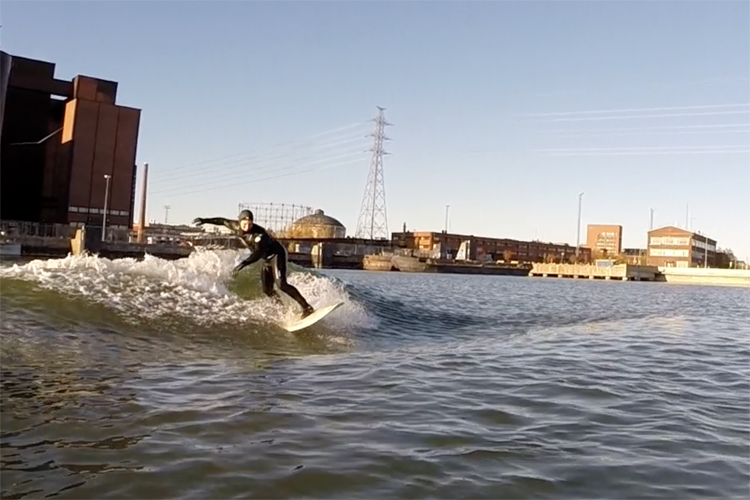
Surfing in Kalasatama: The Helsinki Test
Artwave's surf-anywhere formula was put to the test for the first time in the beautiful city of Helsinki in 2014.
The town hall authorities granted Atso Andersen and his team the opportunity to run a demo and operational tests in the waterfront area of Kalasatama in central Helsinki.
Kalasatama was a former oil harbor that has been replanned to welcome high-end residential and commercial zones.
It was - and still is - the perfect venue for Finland's iconic artificial wave technology, considering the new generation of youngsters and Generation X water sports-loving enthusiasts.
So, in 2014, and for several months, the Finnish surfing community and other curious, active sports participants saw a real-life moving wave popping up in front of a shipping harbor background.
The photos taken at the time are mesmerizing. And if you're a surfer, you know what it means.
It's like the Eisbach River wave, the now emblematic and tourist symbol of Munich, but with an ocean-like wave instead of a static wave.
Whether you were surfing famous destinations in California, Australia, or Portugal regularly, you'd be stunned and amazed by Artwave's creation in the cool-to-cold water of the Baltic Sea that serenely kisses Helsinki's endless coastline.
Despite the huge success, Finland's capital city could not capitalize on the already fun and pleasurable version 1.0 of Artwave.
The tide, though, could be about to change.
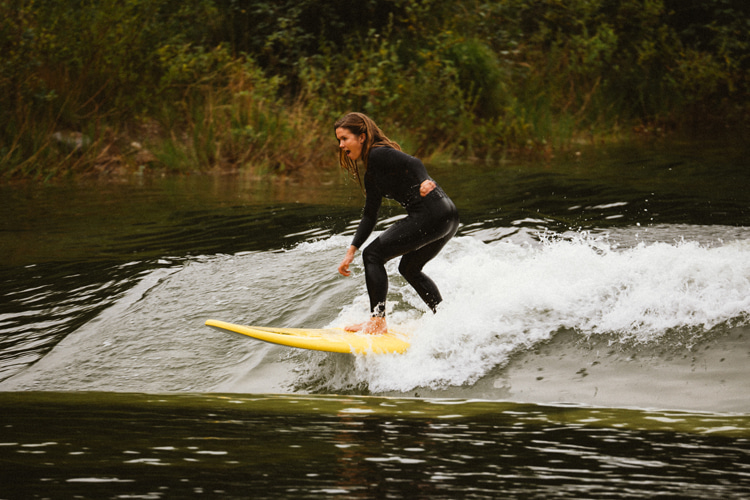
The Eisbach and Nazaré Effect
Surfing has already changed the socioeconomics of many coastal towns around the globe. The list is endless and includes communities on all continents.
However, two examples can be particularly relevant: the Eisbach river wave in Munich, Germany, and Nazaré's Praia do Norte in Portugal.
The Eisbach river wave in the heart of Munich is undeniably one of the main visiting postcards of the Bavarian city.
A quick check on the world's most famous guides (TripAdvisor, Lonely Planet, Time Out), and you'll see that the famous Eisbachwelle is listed in the top to-do, must-go suggestions.
Germany, a country that, for obvious reasons, never had a naturally close connection with surfing, made this small river wave happen by not only allowing the practice of stationary surfing possible but also helping improve its riding conditions in and out of the water, come rain or come shine.
Another similar example is Nazaré in Portugal.
What was once, and for centuries, a quiet and relatively poor fishing town is now one of the most sought-after natural wonder attractions in Portugal.
When Garrett McNamara broke the Guinness World Record for the biggest wave ever ridden, Nazaré made the news worldwide and changed forever.
The local economy is now boosted mainly by the surf and tourism industries, with thousands of athletes and media professionals making it their second home.
On an average day, you can find people from all corners of the world flocking to the iconic lighthouse to see the thunderous waves breaking down the cliff.
Praia do Norte is now funneling not only giant moving walls of water but also significant revenue that is being invested in the town's facilities.
You have to see it with your eyes.
My Experience at Artwave
I have ridden thousands of ocean waves throughout my 30-year-plus surfing life.
I have also tried Flowrider's sheet wave concept. But I had never ridden a moving artificial human-made wave.
The founder of Artwave was a true gentleman.
He insisted on picking me up in Helsinki and driving me to his "headquarters" in Karkkila, a town located 45 miles (70 kilometers) north of Finland's capital.
That's where he established his test site. The place is idyllic.
Imagine a private property with a Nordic forest, a dream lake in its center, and a surf shack on one of its edges.
A sauna is already being built and taking shape, too.
Atso took half an hour to get the system ready to go.
As soon as we got the green light, Juhani, Jussi, Antti, and I entered the warm freshwater lake and paddled toward the take-off zone.
Pressure was building.
There is something unusual when you're waiting for a machine to prepare a wave for you to ride.
My heart rate was way higher than expected. It was pumping at 125 bpm. And I was not even yet surfing.
When my turn arrived, anxiety gave way to excitement.
I was not able to take off on the first three waves. Everything's different, and I guess I needed time to adapt.
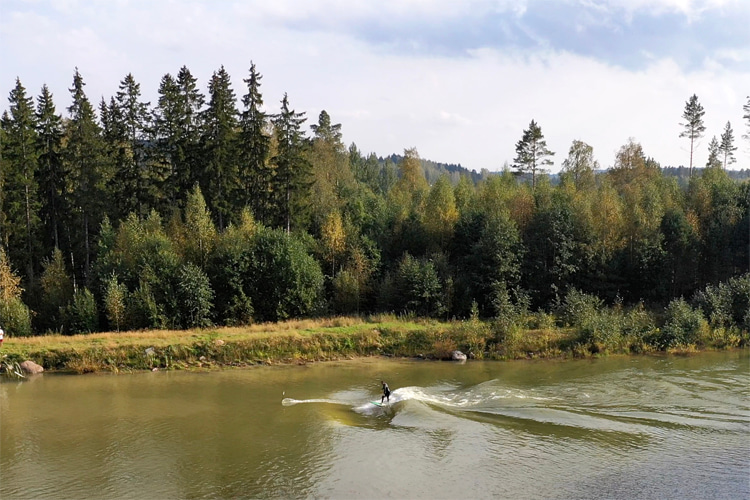
The shape of the wave is similar to an ocean slope, but initially, when you're getting used to the whole new circumstance, the feel is different.
I was told and rapidly realized I was not paddling enough time for each wave. Eventually, I got it and went on to experience Artwave to the fullest.
The two-hour session felt like half an hour.
We were having so much fun, smiling, cracking jokes, backing and cheering each other up.
I didn't want it to end.
Atso had placed a pipe on the side of the lake so that surfers know when to kick out.
I called it the "Pipe Line."
When we finally got out of the water, I enjoyed the same feelings we usually experience after a regular ocean surf session.
Atso even made sure he lit up a campfire so I could taste the traditional Finnish sausages cooked scout-style.
Artwave is a flexible, portable, expandable, and inexpensive wave pool concept that can be installed anywhere - in Helsinki, Stockholm, London, Paris, Los Angeles, Gold Coast, or even in America's Great Lakes.
What's really interesting is that it can have a net-positive effect on the environment, especially if you attach a solar power system and consider its aeration abilities.
Can you imagine a sports entertainment facility that is better for the planet than having nothing in a given body of water?
The Finnish artificial wave system has a very special place in the next-generation wave pool industry.
Hopefully, the vision of Helsinki City Hall authorities will spread across the world in order to make surfing a tourism magnet in any small, medium, or large urban community.
SurferToday traveled to Finland at its own expense.
Words by Luís MP | Founder of SurferToday.com
